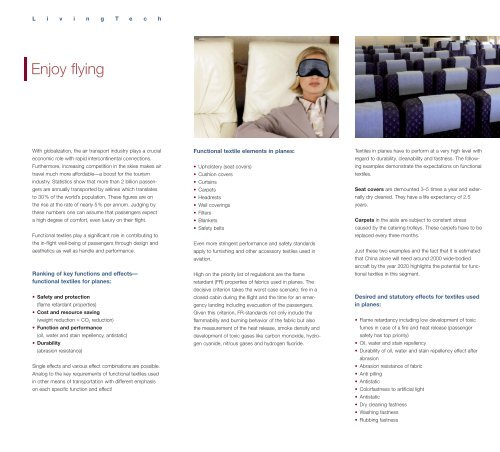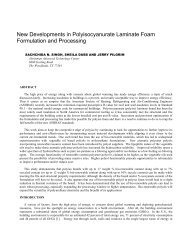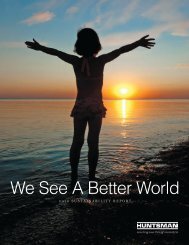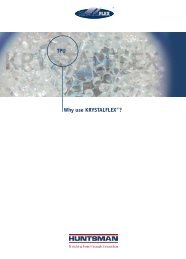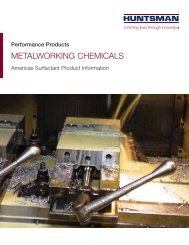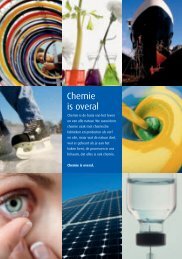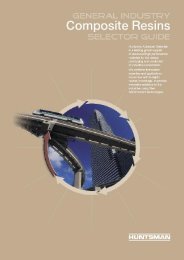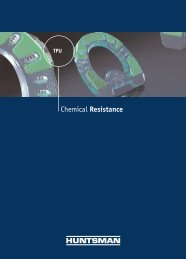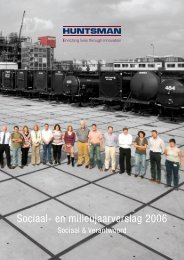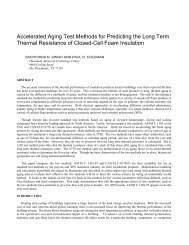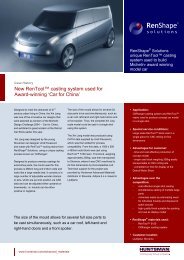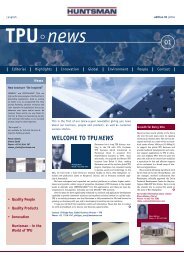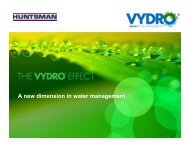LivingTech—enjoy traveling
LivingTech—enjoy traveling
LivingTech—enjoy traveling
Create successful ePaper yourself
Turn your PDF publications into a flip-book with our unique Google optimized e-Paper software.
L i v i n g T e c h<br />
Enjoy flying<br />
With globalization, the air transport industry plays a crucial<br />
economic role with rapid intercontinental connections.<br />
Furthermore, increasing competition in the skies makes air<br />
travel much more affordable—a boost for the tourism<br />
industry. Statistics show that more than 2 billion passengers<br />
are annually transported by airlines which translates<br />
to 30% of the world’s population. These figures are on<br />
the rise at the rate of nearly 5% per annum. Judging by<br />
these numbers one can assume that passengers expect<br />
a high degree of comfort, even luxury on their flight.<br />
Functional textiles play a significant role in contributing to<br />
the in-flight well-being of passengers through design and<br />
aesthetics as well as handle and performance.<br />
Ranking of key functions and effects—<br />
functional textiles for planes:<br />
• Safety and protection<br />
(flame retardant properties)<br />
• Cost and resource saving<br />
(weight reduction = CO2 reduction)<br />
• Function and performance<br />
(oil, water and stain repellency, antistatic)<br />
• Durability<br />
(abrasion resistance)<br />
Single effects and various effect combinations are possible.<br />
Analog to the key requirements of functional textiles used<br />
in other means of transportation with different emphasis<br />
on each specific function and effect!<br />
Functional textile elements in planes:<br />
• Upholstery (seat covers)<br />
• Cushion covers<br />
• Curtains<br />
• Carpets<br />
• Headrests<br />
• Wall coverings<br />
• Filters<br />
• Blankets<br />
• Safety belts<br />
Even more stringent performance and safety standards<br />
apply to furnishing and other accessory textiles used in<br />
aviation.<br />
High on the priority list of regulations are the flame<br />
retardant (FR) properties of fabrics used in planes. The<br />
decisive criterion takes the worst case scenario: fire in a<br />
closed cabin during the flight and the time for an emergency<br />
landing including evacuation of the passengers.<br />
Given this criterion, FR-standards not only include the<br />
flammability and burning behavior of the fabric but also<br />
the measurement of the heat release, smoke density and<br />
development of toxic gases like carbon monoxide, hydrogen<br />
cyanide, nitrous gases and hydrogen fluoride.<br />
Textiles in planes have to perform at a very high level with<br />
regard to durability, cleanability and fastness. The following<br />
examples demonstrate the expectations on functional<br />
textiles.<br />
Seat covers are demounted 3–5 times a year and externally<br />
dry cleaned. They have a life expectancy of 2.5<br />
years.<br />
Carpets in the aisle are subject to constant stress<br />
caused by the catering trolleys. These carpets have to be<br />
replaced every three months.<br />
Just these two examples and the fact that it is estimated<br />
that China alone will need around 2000 wide-bodied<br />
aircraft by the year 2020 highlights the potential for functional<br />
textiles in this segment.<br />
Desired and statutory effects for textiles used<br />
in planes:<br />
• Flame retardancy including low development of toxic<br />
fumes in case of a fire and heat release (passenger<br />
safety has top priority)<br />
• Oil, water and stain repellency<br />
• Durability of oil, water and stain repellency effect after<br />
abrasion<br />
• Abrasion resistance of fabric<br />
• Anti pilling<br />
• Antistatic<br />
• Colorfastness to artificial light<br />
• Antistatic<br />
• Dry cleaning fastness<br />
• Washing fastness<br />
• Rubbing fastness


